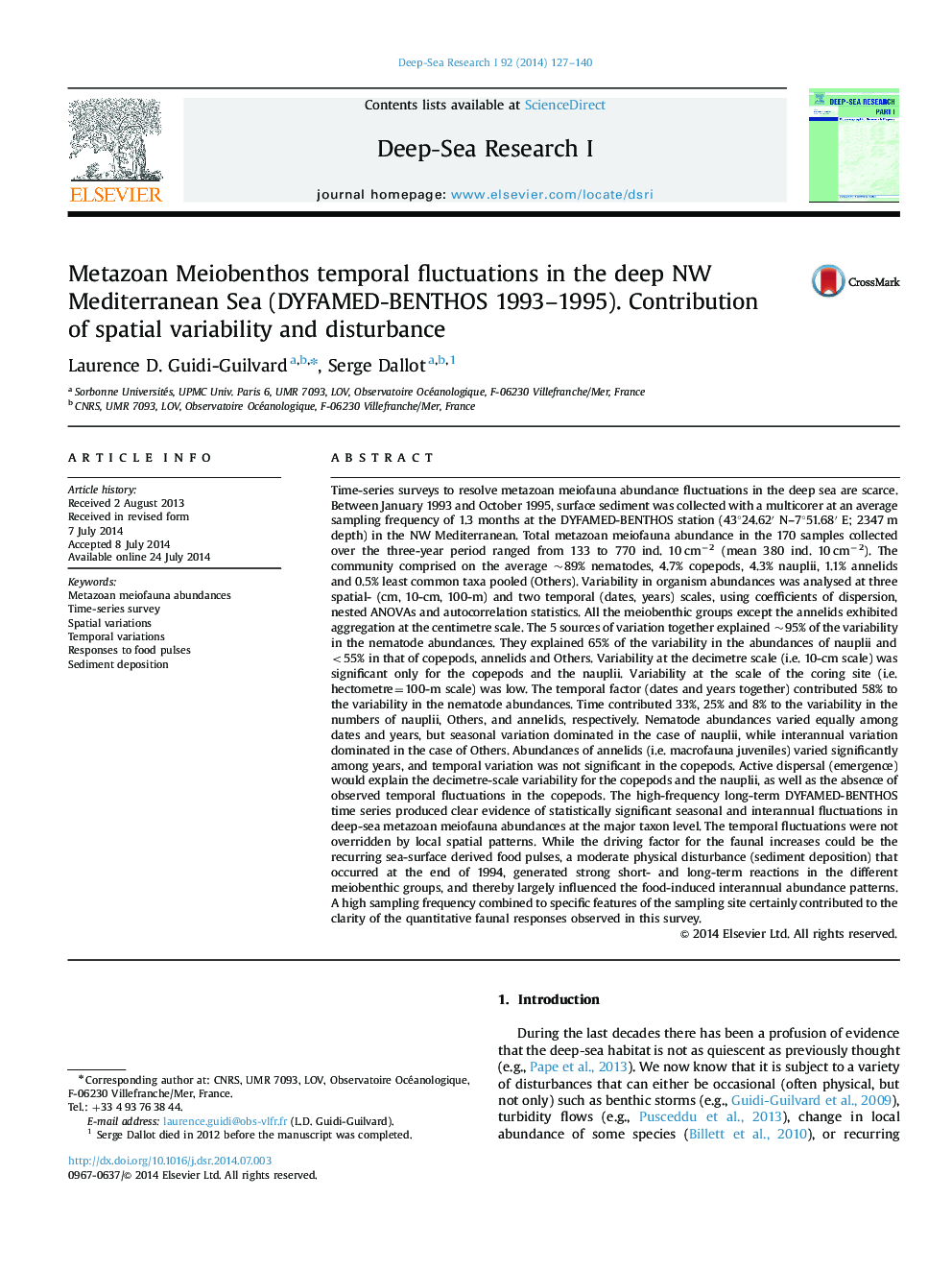| Article ID | Journal | Published Year | Pages | File Type |
|---|---|---|---|---|
| 6383612 | Deep Sea Research Part I: Oceanographic Research Papers | 2014 | 14 Pages |
Abstract
Time-series surveys to resolve metazoan meiofauna abundance fluctuations in the deep sea are scarce. Between January 1993 and October 1995, surface sediment was collected with a multicorer at an average sampling frequency of 1.3 months at the DYFAMED-BENTHOS station (43°24.62â² N-7°51.68â² E; 2347 m depth) in the NW Mediterranean. Total metazoan meiofauna abundance in the 170 samples collected over the three-year period ranged from 133 to 770 ind. 10 cmâ2 (mean 380 ind. 10 cmâ2). The community comprised on the average ~89% nematodes, 4.7% copepods, 4.3% nauplii, 1.1% annelids and 0.5% least common taxa pooled (Others). Variability in organism abundances was analysed at three spatial- (cm, 10-cm, 100-m) and two temporal (dates, years) scales, using coefficients of dispersion, nested ANOVAs and autocorrelation statistics. All the meiobenthic groups except the annelids exhibited aggregation at the centimetre scale. The 5 sources of variation together explained ~95% of the variability in the nematode abundances. They explained 65% of the variability in the abundances of nauplii and <55% in that of copepods, annelids and Others. Variability at the decimetre scale (i.e. 10-cm scale) was significant only for the copepods and the nauplii. Variability at the scale of the coring site (i.e. hectometre=100-m scale) was low. The temporal factor (dates and years together) contributed 58% to the variability in the nematode abundances. Time contributed 33%, 25% and 8% to the variability in the numbers of nauplii, Others, and annelids, respectively. Nematode abundances varied equally among dates and years, but seasonal variation dominated in the case of nauplii, while interannual variation dominated in the case of Others. Abundances of annelids (i.e. macrofauna juveniles) varied significantly among years, and temporal variation was not significant in the copepods. Active dispersal (emergence) would explain the decimetre-scale variability for the copepods and the nauplii, as well as the absence of observed temporal fluctuations in the copepods. The high-frequency long-term DYFAMED-BENTHOS time series produced clear evidence of statistically significant seasonal and interannual fluctuations in deep-sea metazoan meiofauna abundances at the major taxon level. The temporal fluctuations were not overridden by local spatial patterns. While the driving factor for the faunal increases could be the recurring sea-surface derived food pulses, a moderate physical disturbance (sediment deposition) that occurred at the end of 1994, generated strong short- and long-term reactions in the different meiobenthic groups, and thereby largely influenced the food-induced interannual abundance patterns. A high sampling frequency combined to specific features of the sampling site certainly contributed to the clarity of the quantitative faunal responses observed in this survey.
Keywords
Related Topics
Physical Sciences and Engineering
Earth and Planetary Sciences
Geology
Authors
Laurence D. Guidi-Guilvard, Serge Dallot,
